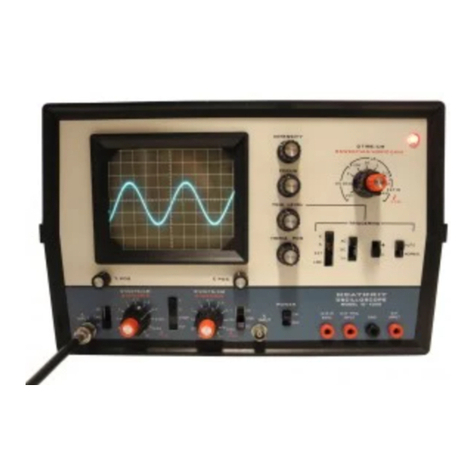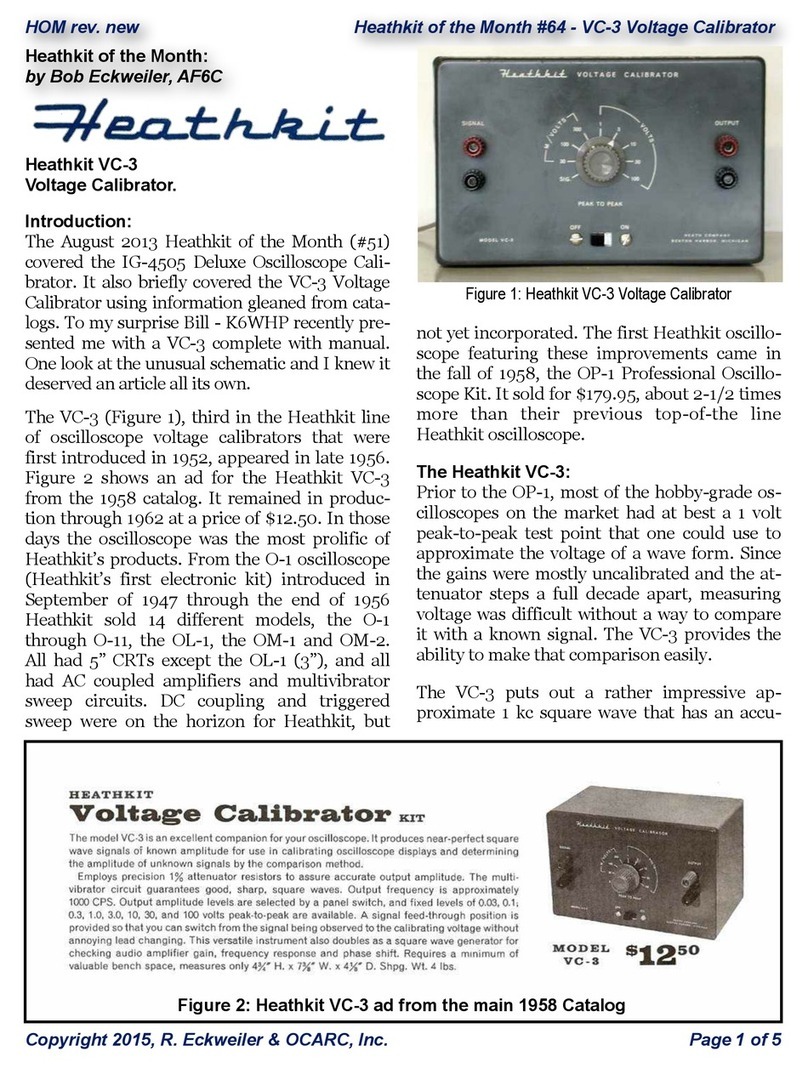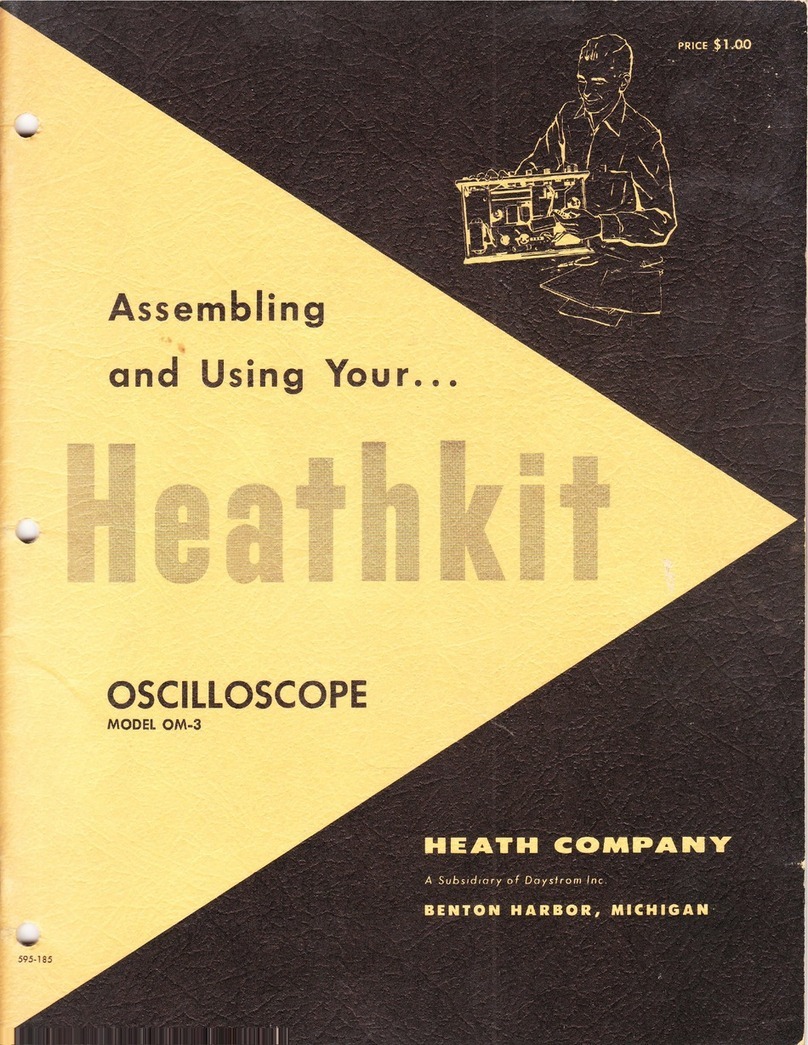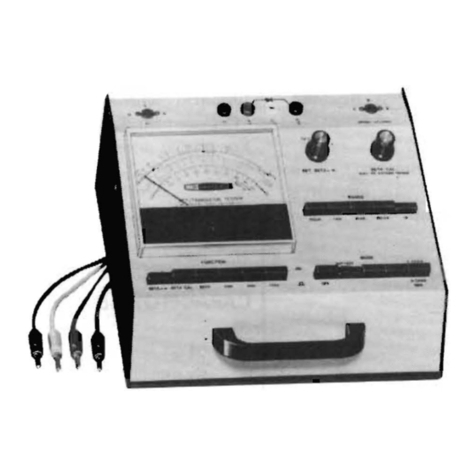
3. Wire up the selector switch (C20A) as far as possible before mounting. On the front deck
(nearest the knob shaft) with bare wire join contacts #1, 2, 3, 4, 5, and 6. (S) all except #1 (NS).
A30K resistor (C13) to contacts #7 (NS) and #8 (NS). A30K resistor to contacts #8 ,(NS) and
#9 (NS). A30K resistor to contacts #9 (S) and #10 (NS). A30K resistor to contacts #10 (S)
and #11 (NS).
On the rear deck a200 condenser (C16) to contact #3 (S)and#9 (NS). A.02 matched pair con-
denser (C 15) to contact #4 (S) and#9 (NS). A90K precision resistor to contact #8 (NS) and #9 (NS).
4. Mount the partially wired selector switch on the panel with acontrol nut, using acontrol lock-
washer between switch and panel and anickel washer between nut and panel. Before tightening
the nut securely, fasten apointer knob to the shaft temporarily. Turn the switch so the rotor
connects to contact #1 (as shown in pictorial). Now turn the whole switch assembly .so the
knob points at the "R" marking on the panel. Carefully remove knob and tighten mounting nut .
5. Assemble both end brackets (C30) to panel as shown using 6-32 screws. Use lock washers
under the nuts and mount one single terminal strip (038) under the lock washer nearest the
selector switch. Mount two single terminal strips (038) to the end bracket nearest the slide
switch, using 6-32 screws and lock washers under the nuts. Install the banana jack inserts by
pushing them into the banana jacks from the front of the panel as far as possible. Install neon
lamp (SG22) in lamp socket and insert lamp partly through grommet in panel.
6. A200k resistor (Vll) to single terminal near neon lamp socket (NS) and to contact #12 on
rear deck of selector switch (NS). Awire to contact #12 (S) and to center (red) banana jack
(NS). A30k resistor (C13) to center (red) banana jack (S) and to farthest switch terminal on
power factor control (S). Awire to center switch terminal on power factor control (S) and to
contact #12 on front deck of selector switch (NS). Awire to contact #12 (S) and to one lug on
lamp socket (S). Awire to other lug on lamp socket (S) and to adjacent terminal strip (NS).
Note: Make the wires to the lamp socket long enough to permit removal of the lamp if such
should be necessary.
7. A.5 condenser (C17) to terminal strip near neon lamp (S) and to nearest switch terminal on
power factor control (S). Awire to nearest terminal of power factor control (S) and to adjacent
banana jack (NS). Awire to banana jack adjacent to power factor control (S) and to contact
#9 on rear deck of selector switch (S). Awire to contact #8 on rear deck of selector switch
(S) and to farthest terminal of main control (S).
8. A2MFD precision condenser (C44) between the single terminal strips on the end bracket
(NS). Awire to the terminal strip on the end bracket nearest the panel (S) and to center ter-
minal of power factor control (S). Awire to terminal strip on the end bracket farthest from
the panel (S) and to contacts #5 and #6 on rear deck of selector switch (S). A68-75K resistor
(C41) to contact #7 on front deck (S) and to center terminal of the main control (NS).
9. Mount the assembled chassis to the end brackets with 6-32 screws, using lockwashers under
the nuts. Wire the filament circuit as follows: The two yellow leads from the transformer
twisted together and one wire to pin #2 (NS) and the other to pin #7 (NS) on 12A6 socket. Two
wires to pin #2 (S) and pin #7 (S) on 12A6 socket and, after twisting them together, to pin #2 (S)
and pin #7 (S) on 1629 socket. One red transformer lead to pins #3, #4 and #5 (S) onl2A6 socket.
Other red transformer lead to solder lug (NS). Awire to pin #1 on 12A6 socket (NS) and to
solder lug (NS). Awire to pin #8 on 1629 socket (NS) and to solder lug (S).
10. Twist black transformer leads partly together, one wire to alug on slide switch (S), other lead
to lug nearest slide switch on dual terminal strip (NS). Awire to pin #1 on 12A6 socket (NS)
and to center terminal on main control (S). An 8MFD condenser (O50) with negative lead to
pin#l on 12A6 socket (S), positive lead to pin #4 on 1629 socket (NS). An 8MFD condenser (O50)
with negative lead to pin #4 on 1629 socket (NS), positive lead to pin #8 on 12A6 socket (NS).
Note: Use spaghetti over the condenser leads to prevent accidental contact to other leads and
lugs.
f
'11. Awire to pin #8 on 12A6 socket (S) and to eontact #11 on front deck of selector switch (S). A
wire to pin #4 on 1629 socket (NS) and to contact #8 on front deck of selector switch (S). A
wire to pin #1 on 1629 socket (NS) and to contact #1 on front deck of selector switch (S).
Page 2

































